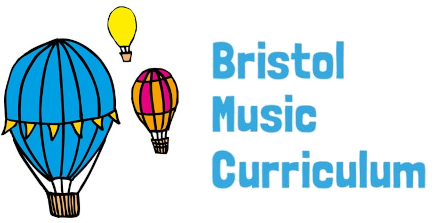Key Learning Objectives: To sing with increasing confidence and control as an individual and in a group. To maintain a part in a round. To identify a mood and sing with expression. To identify the structure of two songs (round / call and response). Starter activity: Listen and learn the melody to the track, ‘Sail […]
Tag: structure
Year 6, Unit 2: Samba – Lesson 4
Key Learning Objective: To recognise and perform complex rhythms and maintain a rhythmic part in canon / in a round (where one parts begins before another). Starter activity: Call and response practice, based on a teacher-led activity. The teacher to whisper the call and the pupils to echo the response rhythms. Extend the activity by dividing […]
Year 6, Unit 1: Water – Lesson 5
Key Learning Objective: To compose a rhythmic ostinato inspired by engine sounds. Starter activity: Listening and response exercise based on ‘Connect It’ by Anna Meredith, focus on identifying the ostinato rhythms. Main activity: In groups, work further on the engine compositions. Discuss ways in which groups could combine their rhythms to form a longer piece and or layer […]
Year 5, Unit 1: Air – Lesson 5
Key Learning Objective: To refine and improve our compositions for the Air Fiesta project. Starter activity: Listening and response exercise, play the recordings of the 10-20 second performances from last week. Can pupils identify which aircraft is being represented and use music vocabulary to explain why they think this. Main activity: Pupils to make improvements to their compositions so […]
Year 4, Unit 2: Rhythm – Lesson 3
Key Learning Objectives: To explore how rhythm is used in a non-western musical tradition. To learn about strong and weak beats in Indian talas. To perform Tintal tala with increasing aural memory. To compose and perform an Indian tala inspired rhythm in an ensemble with increasing accuracy. Starter activity: Select an activity from the Rhythm […]
Year 4, Unit 1: Water – Lesson 2
Key Learning Objective: To identify the key features of a sea shanty. Additional Learning Objectives: To perform as either the shanty man or in chorus. To demonstrate a feeling for the pulse of the song. Starter activity: Listening and response exercise, create a class boat and listen to ‘Haul Away Rosie’. Pupils to ‘haul a rope’ in […]
Year 3, Unit 3: Pitch – Lesson 1
Key Learning Objectives: To develop an understanding of pitch through kinaesthetic learning. To listen to and trace the pitch of a melody. To learn that the leaps in-between notes are called intervals. Starter activity: Engage with the ‘aeroplane trail’ activity, found in the Pitch Starter Bank. Main activity: Listening and response exercise based on the track ‘Land […]
Year 3, Unit 1: Air – Lesson 3
Key Learning Objectives: To create a soundscape with an identifiable structure. Starter activity: One group to perform their soundscape from the previous lesson. Response to ask why certain aspects of the performance are not the same as the previous lessons performance. Main activity: Introduce the concept of notation, using the idea of a graphic score to […]
Year 3, Unit 1: Air – Lesson 2
Key Learning Objectives: To create a soundscape with an identifiable structure. Starter activity: Introduction to the concept of structure, demonstrating its importance through the scenario of a telephone call. Main activity: Create a whole class soundscape of a hot air balloon taking off. Each group to be designated one section of the soundscape structure. Plenary: Performance opportunity, groups […]
Year 2, Unit 2: Chronology – Lesson 6
Key Learning Objectives: To notate sounds using a graphic score. To compose and perform a piece of music using sampled sound. To compose and perform a motif which suggests a looming effect. Starter activity: Listening and response exercise based on the work ‘Loomings’ by Three Cane Whale. Introduction to the concept of minimal music as […]
